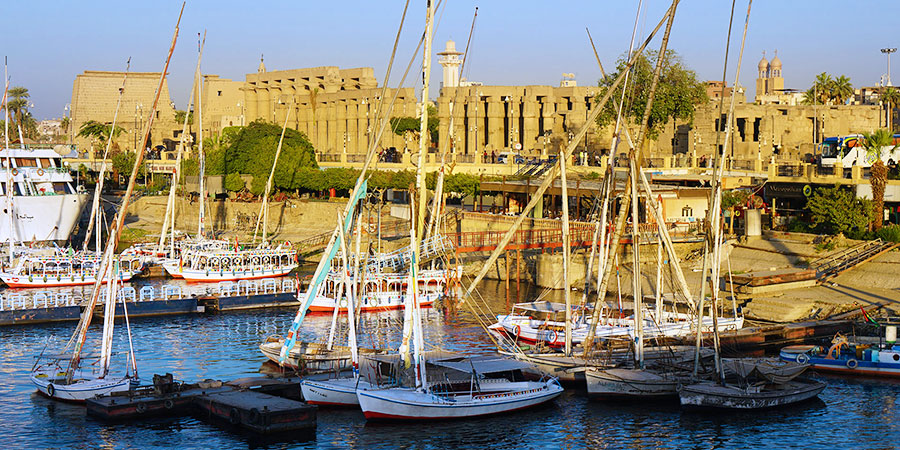All You Need to Know about Aswan History
Aswan, sometimes also called Assuan or Assouan, is located on the east bank of the River Nile. Today, it is a busy tourist centre which was the frontier town of Ancient Egypt. Aswan is basically the ancient city of Swenett, which is also refered to as Syene and is named after an Egyptian goddess.Overview
In the Egyptian civilization there appears to be 17 cities and 24 towns in its administrative network. However, as the population increased over time, the number of cities also increased but the city of Aswan is one where you can still find pure Egyptian culture and an impressive preservation of the heritage. The city served as the southern frontline for Egypt during the Egyptian civilization era and has also been the heart and home of Nubian culture (learn more history in Nubian Museum). It has an immense historical significance and since the day of this city was formed it became one of the main providers of precious natural elements such as quartzite, limestone, granite and more.

Aswan located on the east bank of the Nile
|
Today, Aswan is one of the most important cities in the world in terms of historical significance and is listed on the UNESCO creative cities network in folk art and craft category.
Aswan History
Aswan, which was also known as ‘Sono’ or ‘the market’ derived its name because it was an important commercial centre during the Ptolemaic era. It was referred to as Syene and the Nubians named them as Lipa Swan. Soon, Aswan was referred to as the land of gold because of the various building materials stock available.Before the Nubians migrated the city extended from Sudan in the south and Isla on the East. During the old Kingdom the city played a significant role in maintaining the southern borders of the country. It served as the base for the assembly center of the army during the middle Kingdom when there was a rigorous expansion of the rule towards the southern area. To come closer to the Egyptians, a number of pharaonic style temples were constructed by the Romans in the fifth century AD. When Christianity was more popular in Egypt, various pharaonic temples were converted into churches. With the spread of Islam, a number of Kofi calligraphy from the first century AH are found in Aswan.
In 10th century AD, the place flourished as it served as the connection to the red coast where the ships used to live for trade to Hejaz, India and Yemen. During the sixth and the seven centuries AH, Aswan became an important cultural centre and three schools where constructed - Aswan, Al-Saifiah, and Al-Najmiah. In 1837, this is where Muhammad Ali Paha started the first Military School of Egypt.
The First Measurement of Earth's Circumference
Eratosthenes refuted the concept of a flat Earth in Aswan. He was the first to make a calculation of the measurement of the circumference of earth considering Syene as the center and Alexandria as one of the edge points. To calculate the length of the earth, he based his work on the shadow length during the solstices in these two cities. Interestingly, the Tropic of Cancer almost passes through Aswan.Important Historical Landmarks
1. Abu Simbel

Abu Simbel Temple
|
2. Nubia Old Temples
In Aswan history, there are restored temples stretching from Nile to Dongola in Sudan fourth cataract. The temples include Kalabsha Temple which dates back to 30 BC during the era of Roman Empire Augustus Beth and El Wali Temple - this is one of the five Rock cut temples by ramses II and has some other under development temples of Al Dekkah, Al Dorr, Al Sobu, Al Mahraqa and Ebrim Palace.3. Elephantine Island
This is regarded as one of the most tourist places in Aswan but has a great archaeological value. You can still find the colorful houses of The Nubian villages of Koti and Siou.
4. Unfinished Obelisk

Unfinished Obelisk
|
5. Tomb of Nobles
The rulers in Aswan history have their tombs carved in sandstone and are of great historical importance. The tombs of Sabni and Mekhu are the most important ones which represent a unique architectural style of that time. The inscriptions speak about the titles of the Governors of Egypt during that time and about their roles.6. Nilometer
One of the very important artifacts that you can find in Aswan history here is the Nilometer which dates back from the Roman era and was used to scale the rise of water in the river. You will find it in Arabic and Greek languages and was in use until recently.7. Step Pyramid
This is a crucial landmark in Aswan history which is seen on the Northern side of the monumental area. It is a Granite structure with clay mortar which is from the third dynasty of the old Kingdom. With immense archaeological value, this is one of the most important tourist attractions in Aswan today (See also Top Aswan Attractions).

